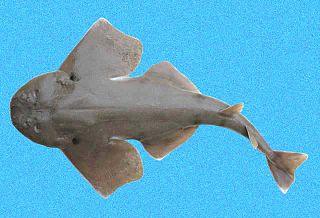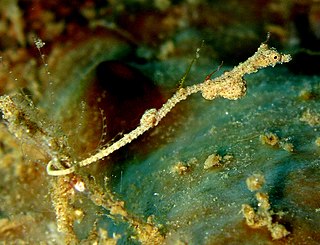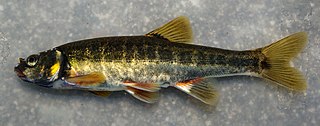 W
WAchondrostoma salmantinum is a species of freshwater fish in the family Cyprinidae. It is native to five tributaries in the Duero basin in the Province of Salamanca, Spain. It is normally found in clear, seasonal streams with sandy substrates, preferring the slower flowing stretches which have an abundant vegetation of aquatic macrophytes. The species is common within its restricted range but it has a declining population and it is threatened mainly by falling water tables caused by the abstraction of water for agriculture and the construction if dams and weirs.
 W
WAlburnus leobergi is a species of ray-finned fish in the genus Alburnus; it is widespread in Eastern Europe in the Sea of Azov basin. A landlocked population exists in Tsimlyansk Reservoir. It is a benthopelagic fish, up to 40.3 cm long.
 W
WAlburnus sarmaticus is a species of ray-finned fish in the genus Alburnus. Widespread in European rivers: Southern Bug, Dnieper, Danube ; River Kolpa, an upper tributary to the River Sava in Croatia and Slovenia. Almost extirpated in Danube, to be probably survived only in River Kolpa.
 W
WAmatitlania siquia, the Honduran red point cichlid, is a species of cichlid native to Central America.
 W
WThe bighead spurdog is a rare and little-known species of dogfish shark in the family Squalidae. It is found in deep water south of New Caledonia, and over the Norfolk Ridge. Reaching at least 90 cm (35 in) in length, this stocky shark is brown above and light below, with a broad head and two dorsal fins with long spines. It is the only member of its genus with both one- and three-pointed dermal denticles. An infrequent bycatch of longline fisheries, this species is listed under Data Deficient by the International Union for Conservation of Nature (IUCN).
 W
WBotia udomritthiruji is a small freshwater fish in the loach family Botiidae native to the Great Tenasserim (Tanintharyi) River Basin in south Burma. It reaches 13–15 cm (5.1–5.9 in) in length, and the female's abdomen plumper than the abdomen of the male.
 W
WThe Burdur spring minnow is a species of freshwater fish in the family Cyprinidae. It is found in several springs and streams in the Central Anatolia Region in and in the surroundings of Lake Burdur and Lake Salda basins in Turkey.
 W
WThe Chornaya tubenose goby is a species of goby endemic to Crimea, Ukraine where it is only found in a short stretch of River Chornaya. Water is extracted in large quantities for irrigation could cause the stream to completely dry out in summer and thus poses a critical risk of extinction in a near future.
 W
WDanio margaritatus, the celestial pearl danio, often referred to in the aquarium trade as galaxy rasbora or Microrasbora sp. 'Galaxy', is a small cyprinid from Myanmar. It has so far been found only in a very small area near Hopong east of Inle Lake, at an altitude of over 1,000 m (3,400 ft). Its habitat is part of the Salween basin, namely the Nam Lang and Nam Pawn Rivers. Discovered in 2006, the species quickly appeared in the aquarium trade, where its small size and bright colours made it an instant hit.
 W
WThe disparate angelshark is a species of angelshark. It occurs at depths down to 164 m in the Gulf of Mexico and reaches a length of 49 cm (19 in). Heteroptera in its name refers to the difference in size, shape and area of the two dorsal fins. Disparate angelsharks have the typical angel shark body form that is broadly flattened with large pectoral/pelvic fins and eyes and spiracles on the top of their heads. Their common and species name comes from them having dorsal fins of very different sizes, shapes, and areas compared to other angel sharks.
 W
WGalaxias effusus is an extinct species of fish in the genus Galaxias, known only from 23-million-year-old fossils from New Zealand. It is named for its dramatically large dorsal, tail, and anal fins, which are much larger than those of any living New Zealand galaxiid. It is the earliest known member of the Southern Hemisphere family Galaxiiidae.
 W
WIberochondrostoma olisiponensis, the Lisbon arched-mouth nase, is a freshwater fish discovered in 2007 in the lower Rio Tejo basin, Portugal.
 W
WThe thread pipefish is a species of pipefish native to the Pacific Ocean around Indonesia, where it is found at depths from 15 to 20 m. This species grows to a length of 2.68 cm (1.06 in), and is the only known member of its genus.
 W
WThe longfin crevalle jack is a recently described species of large marine fish classified in the jack family, Carangidae. It inhabits the subtropical waters of the east Atlantic Ocean, ranging along the African coast from Mauritania south at least to Moçamedes in southern Angola, with the species historically present in the Mediterranean Sea. It is an inshore species, known to occasionally penetrate estuaries, possibly to spawn. The species is very similar to the crevalle jack, Caranx hippos, and is separated by its extended dorsal and anal fin lobes as well as more detailed anatomical features including dorsal and anal fin ray counts. The fish is known to reach 127 cm in length and 20.9 kg in weight. The longfin crevalle jack is a predatory fish, taking small fish as its main prey. Due to longstanding confusion between C. fischeri and C. hippos, the importance of each species to African fisheries is poorly understood, with a known combined catch in this region of between 2,233 and 10,054 tonnes per year in 1995–2004. Like its close relatives, the species is considered a powerful gamefish and highly sought after, although their coarse flesh makes for relatively poor quality food.
 W
WThe Mexican angelshark is a species of angelshark. It occurs at depths of 70–180 m in the Gulf of Mexico and reaches a length of 88 cm (35 in).
 W
WPhoxinus bigerri, the Adour minnow, is a species of minnow that was described in 2007. It is found in the Adour drainage basin in France and the Ebro basin in Spain and Andorra, it has been introduced to the Douro system. It is a gregarious species which can be found in cold, clear, fast flowing streams with gravel or stony substrates. It spawns in April to June, its main food is small invertebrates.
 W
WThe southern Mandarin dogfish is a species of Mandarin dogfish shark in the genus Cirrhigaleus. It was distinguished from Cirrhigaleus barbifer, which lives in the North Pacific, on an expedition in the coral reefs near Australia in 2007. It is now known to live in the temperate waters in south-eastern Australia and from the Bay of Plenty region in New Zealand, at depths of 146–640 metres.
 W
WTor remadevii, the orange-finned mahseer, also known as the hump-backed mahseer, is a critically endangered species of freshwater fish endemic to the Western Ghats of India. It is restricted to the Kaveri river basin.
 W
WTripterygion tartessicum is a species of fish in the family Tripterygiidae, the threefin blennies. It is widespread in the Mediterranean Sea and eastern Atlantic Ocean, where it occurs along the southern coast of Spain and from Morocco to Tunisia. It is a tropical demersal fish measuring up to 7.7 centimetres (3.0 in) in length.
 W
WThe western highfin spurdog is a dogfish of the family Squalidae found on the continental shelf off Western Australia, at depths between 220 and 510 m. Its reproduction is ovoviviparous.